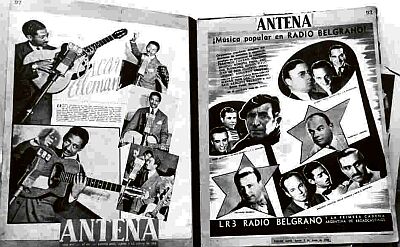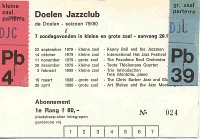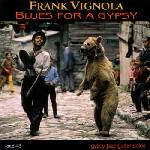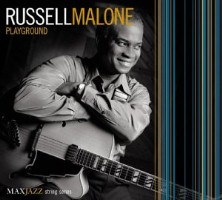Find the three indications in the last three blogs.
 The LP Emanuel Sayles and the Cotton City Jazzband is one of those key records I had in my collection. To be honest - I didn't had a copy of that Alpha Nº 7002 record, but I made a transfer on my reel-to-reel recorded from an LP I had borrowed from the Rotterdam Phonotheek.Of course I don't remember the circumstances after 30 years, but a fact is that I transfered five LPs of the Cotton City Jazzband on one tape, labeled as Band 44. I remember that I was fascinated by the music this band played and I must have borrowed all LPs within a short period. As the youngest LP was recorded in 1976 it must have been taped around 1976-1977.
The LP Emanuel Sayles and the Cotton City Jazzband is one of those key records I had in my collection. To be honest - I didn't had a copy of that Alpha Nº 7002 record, but I made a transfer on my reel-to-reel recorded from an LP I had borrowed from the Rotterdam Phonotheek.Of course I don't remember the circumstances after 30 years, but a fact is that I transfered five LPs of the Cotton City Jazzband on one tape, labeled as Band 44. I remember that I was fascinated by the music this band played and I must have borrowed all LPs within a short period. As the youngest LP was recorded in 1976 it must have been taped around 1976-1977. I transfered the next records:
ALPHA 7001 - COTTON CITY JAZZBAND ( Rec. 27 Jun. 1969 )
ALPHA 7002 - EMANUEL SAYLES and the COTTON CITY JAZZBAND ( Rec. 11 Oct. 1969)
ALPHA 7004 - ALTON PURNELL and the COTTON CITY JAZZBAND ( Rec. 23 Feb. 1970 )

ALPHA 7005 - PERCY HUMPHREY and the COTTON CITY JAZZBAND (Rec. 2 Nov. 1970)
ALPHA 7006 - DON EWELL and the COTTON CITY JAZZBAND (Rec. 22 Feb. 1971)
ALPHA 7011 - FREDDIE KOHLMAN and the COTTON CITY JAZZBAND ( Rec. 5 Jun. 1976 )
The Cotton City Jazzband played in the New Orleans style and was founded in 1962 when seven musicians in Ghent (Belgium) started to play the black music of the 1920s, the music of musicians like Louis Armstrong, George Lewis, Louis Nelson, Fredie Kohlman, Don Ewell and Willie, Earl and Percy Humphrey. They invited musicians from New Orleans to come to Europe to make tours and records, like Rein de Graaff did during the past twenty-five years in bebop style. Some of these living legends are to be found in my compilation, like Percy Humphrey, trumpet player and singer, Don Ewell and Alton Purnell, both piano players, Freddie Kohlman who sung and played drums and Emanuel Sayles on the banjo.
The last one I remember the best. Not only because my brother had bought the Alpha Nº 7002 LP, but also because of the steady rather primitive sound of the vocals and banjo rhythm as played by Emanuel Sayles. I still can hear that sound in my head if I want to, even if I haven't heard the recordings for years and it became for me the symbol of New Orleans jazz.
New Orleans Jazz has never become one of my favorites, except these Cotton City Jazzband sides. Later I found some Sweet Emma (Barrett) recordings as my brother saw her perform at a trip to New Orleans and brought back one of her records. Later I bought another Sweet Emma LP at a flea market. I gues I may have no more but five New Orleans records in my collection.
The COTTON CITY JAZZBAND is still active. They performed at the fall meeting of the Doctor Jazz Reunion in 2000 in Wageningen ( The Netherlands ) and maybe it had slipped my attention as I didn't join that concert. What a shame !!
The Alpha records ( not to muddle up with the three Dutch Alpha records that later became the Grannyphone label) are now collector's items. Have they ever been reissued on CD?
The quality of the reel-to-reel recordings isn't very good, so I hope some of you can help me with some transfers of this excellent traditional New Orleans style band, the COTTON CITY JAZZBAND.
 ( Naar de Nederlandse vertaling.)
( Naar de Nederlandse vertaling.)













































